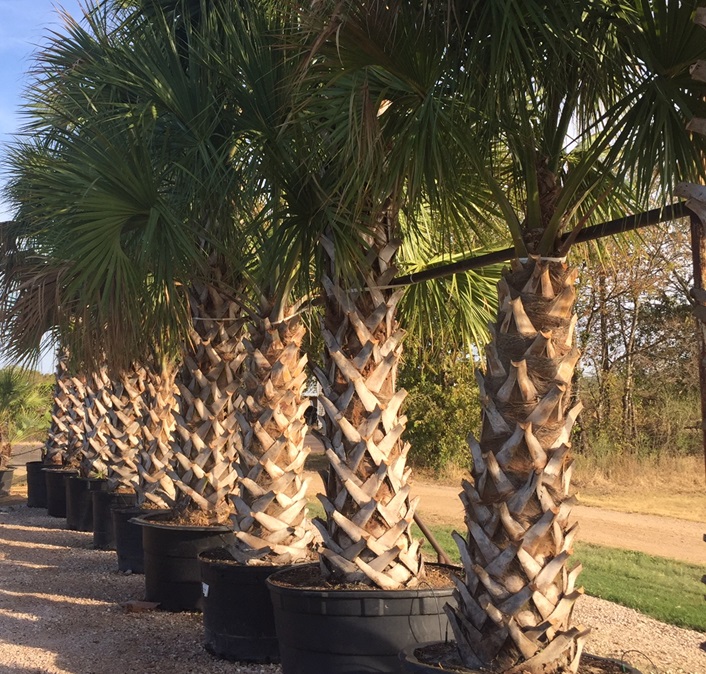PLEASE DO NOT RELY ON RAIN OR IRRIGATION TO ESTABLISH NEWLY PLANTED TREES OR SHRUBS. A DEEP SOAKING WITH A HOSE WILL ESTABLISH TREES AND SHRUBS MORE EFFICIENTLY.
EVERGREEN TREES AND SHRUBS: Evergreen trees and shrubs will need to be watered more often in the winter than deciduous shrubs, as their leaves lose moisture to the wind and to the air during our warm winter Central Texas days. It is difficult to recommend a watering frequency due to our constantly changing temperatures. Remember, if it is warm, or windy, your plants will need to be checked more often. I LIKE TO SEND THEM INTO THE DAY HYDRATED IF WIND IS EXPECTED TO BE HIGH.
DECIDUOUS TREES AND SHRUBS: Trees and shrubs which lose their leaves in the winter will still need to be watered regularly during the establishment period. Roots will grow all winter, and will reward you with a tree or shrub that will better adapt to our hot summer weather. Again, check the soil regularly, and water as needed. The soil may dry between waterings, but not remain dry TOO long. Every week to two weeks should suffice depending on the species and size of the rootball. Smaller root balls will dry more quickly than larger root balls. There is really no substitute for checking the soil with your finger to determine if soil is dry. Temperature, wind and soil type will be the determining factors in how often to water your tree.
Temperature Guidelines for Frequency of Watering (Evergreen Trees will need to be more closely monitored than Deciduous Trees)
90-100 Degrees every day
80-90 Degrees every other day
50-80 Degrees twice a week
Winter once a week
NOTE: These are “guidelines only”. Nothing can replace frequent monitoring of soil moisture.
EVERGREEN PERENNIALS: Evergreen, winter-hardy perennials such as Salvia greggii, Pink Skullcap, and Blackfoot Daisy are easily established during the winter in Central Texas. Like the evergreen shrubs, water them on warm or windy days. The soil should be allowed to dry when it is cool, and should be checked weekly for moisture.
Remember that tender plants such as lemons and other citrus, bougainvillea, and plumeria need to come inside during cold temperatures. Frost cloth and mulch may help borderline plants survive cold weather, but only provide a few degrees of protection.




